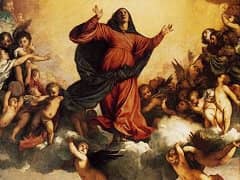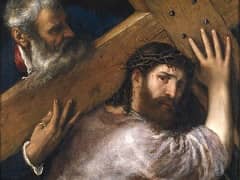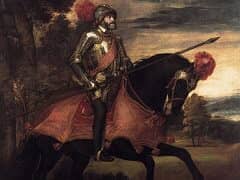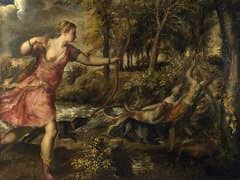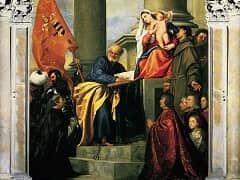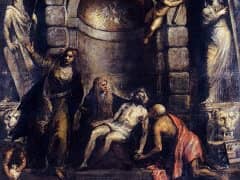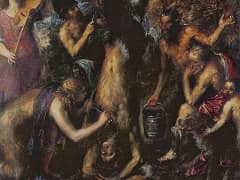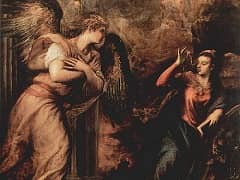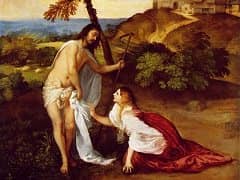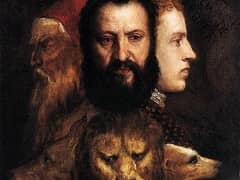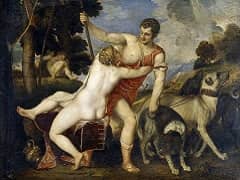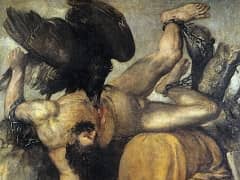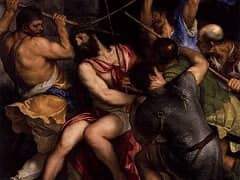Ecce Homo, 1543 by Titian
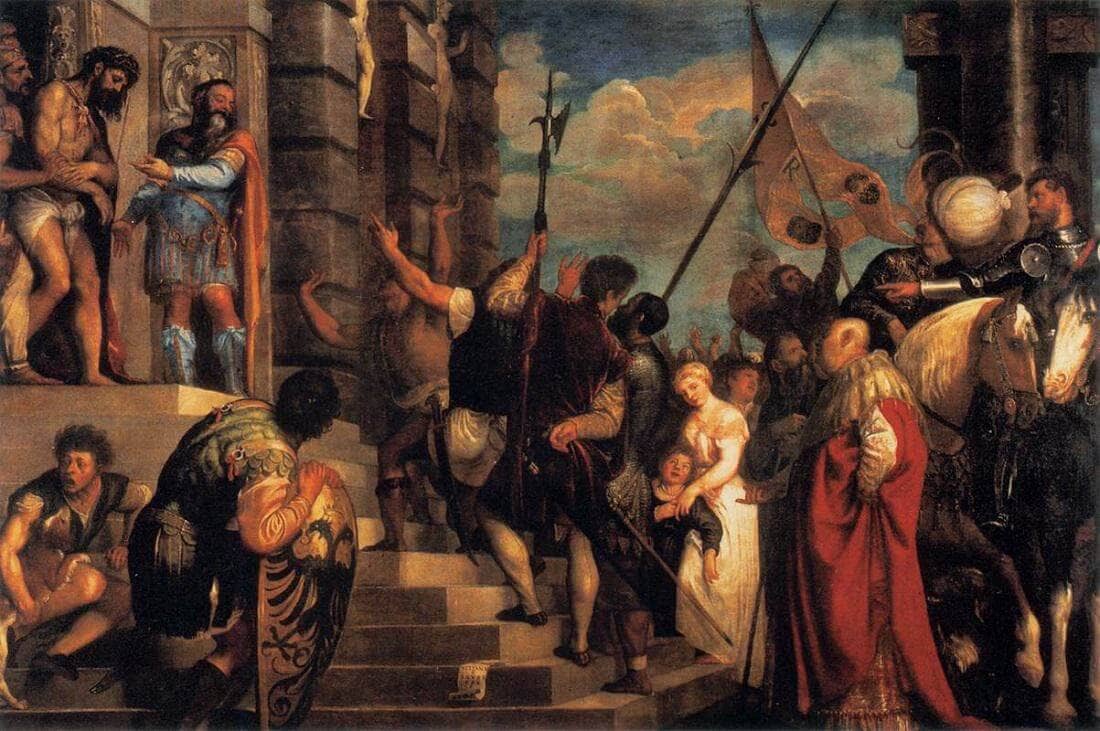
Painted for Giovanni d'Anna, a Flemish merchant resident in Venice, this Ecce Homo was probably initiated not long after Titian completed The Presentation of the Virgin and is in many ways a studied revision of the earlier work. Although the linear flow of the Ecce Homo composition resembles the tableau tradition, it is no longer determined by the decorous movement of reverent processional but rather by the turbulence of confrontation, invested with a dynamism appropriate to the dramatic urgency of its subject. The picture reads from right to left, and this reversal of narrative convention contributes to a heightening of tension and conflict. The surging rhythms of the crowd are both measured and contained by an architecture of powerful plasticity.
The degree to which the forms break from the picture plane - especially the receding steps - distinguishes the Ecce Homo from The Presentation of the Virgin. So, too, does the coloring, and in this respect Titian invites direct comparison with the earlier painting, for in reversing the linear direction of the composition he inverted the sequence of chromatic accents as well: the blue and gold of Pilate's costume here is analogous to that of the Virgin on the steps, and the brilliant ermine-trimmed crimson of the Pharisee corresponds to the officer's robe in the Scuola della Carita canvas. But whereas in the earlier work colors were varied and distributed over the surface so that they became essential harmonic constituents of pictorial unity, here the colors - reds and blues in particular - assert themselves with greater density, contrast, and impact, reinforcing the physical integrity of the individual figures. The figures themselves insist upon creating their own immediate spatial ambience - by their very bulk or by their involved postures that claim the surrounding space. Large-scale contrapposto relationships unite these actors into a single choral movement; through poses, gestures, and glances they form larger units or discourse across the space of the picture. The rhythm of the narrative impulse is controlled and articulated by a variety of figural devices, epitomized by the active diagonal vectors of swords and halberds; it flows from the vertical stability at the right frame and mounts the stairs toward the trio of Christ flanked by the soldier and Pilate. But that surging impulse never fully attains its goal; before it reaches the bowed captive its force is turned - broken, so to speak - by the opposing verticals at the left. Indeed, despite the visual power and apparent aggressiveness of this mob, the figures supposedly abusing Christ display a remarkable lack of hostility; their gestures are not threatening but are rather either purely indicative or positively adulatory, expressive of recognition and praise. Inherent in this spectacle of Christ's debasement, then, is his inevitable triumph.

